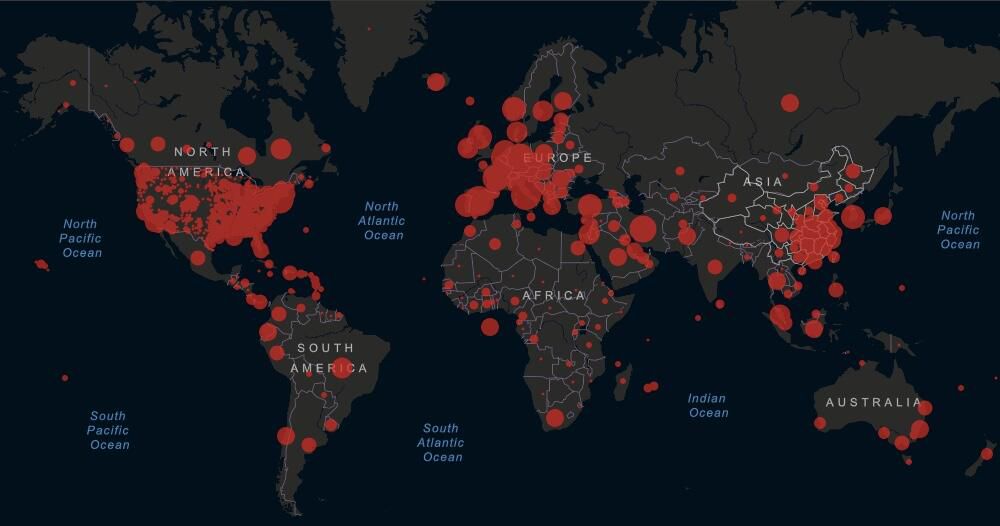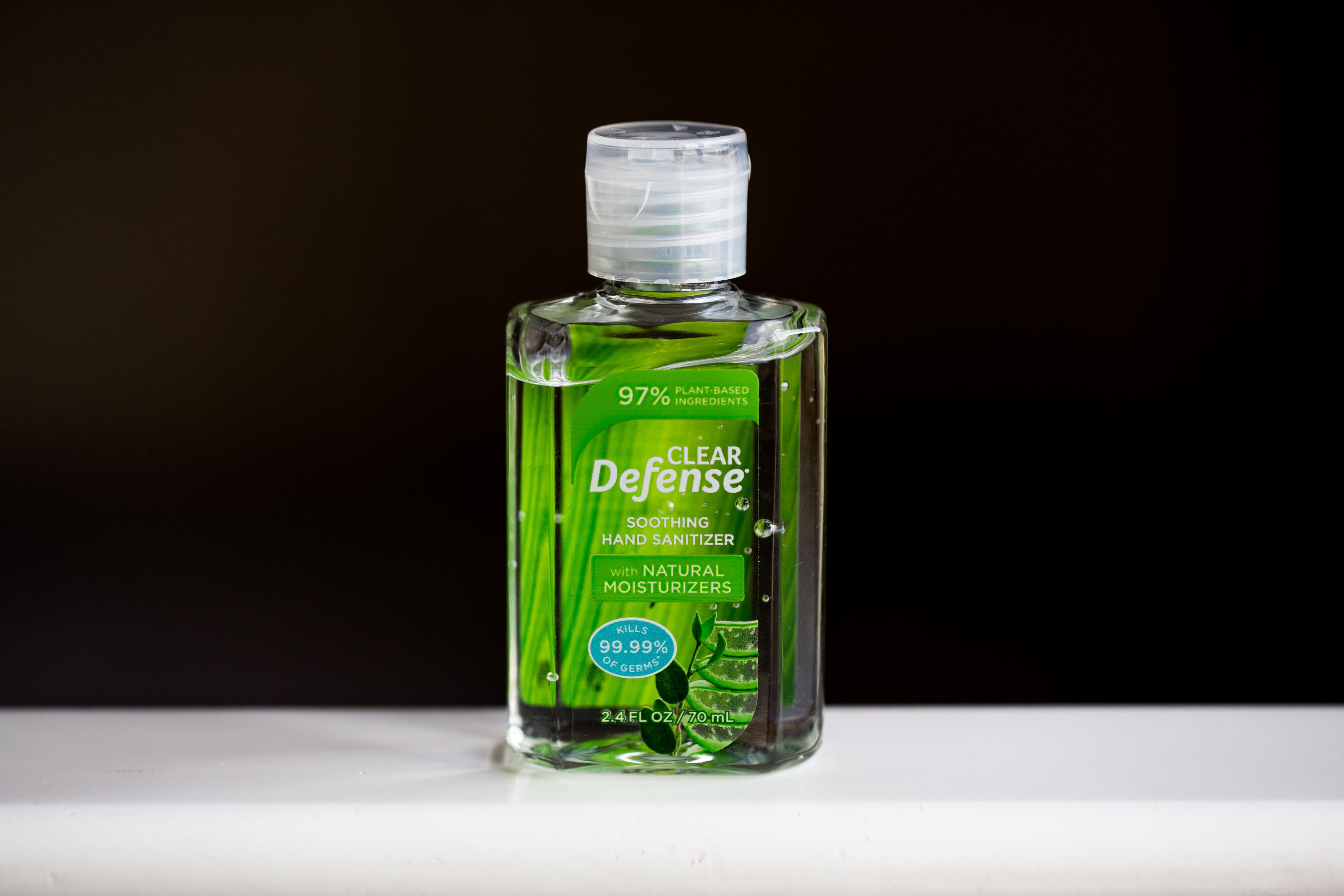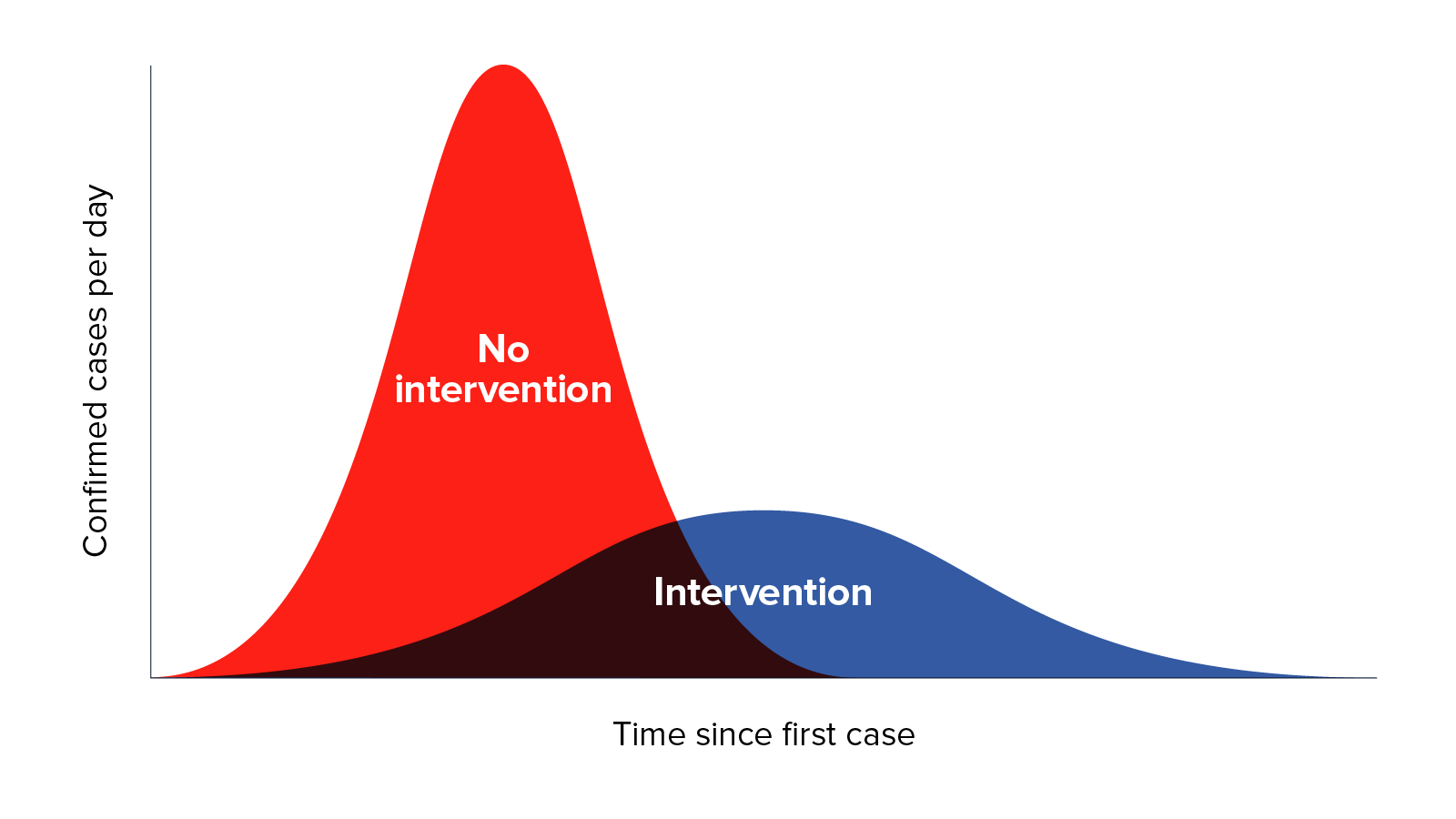Homemade masks, PPE, home testing kit and every other coronavirus term to know
The coronavirus pandemic is putting words in the mouths of billions of people worldwide. Shelter in place, COVID-19, homemade masks, PPE, home testing kits. These terms now form a lexicon that's become part of daily conversation as the virus, which has now killed more than 29,000 people around the globe, continues to spread.

It's an unsettling time. Educating yourself on the science and the social responses to the COVID-19 outbreak will help you understand the situation and help explain it to others.
If you know all of these key terms, congratulations on being so thoroughly informed. If not, this guide willl help you brush up on the critical terms to get along in a coronavirus world. We'll continue to update this story as our social response to the virus evolves.
Novel coronavirus and SARS-CoV-2
No, the virus known to have infected over 400,000 people isn't actually named "coronavirus." The word refers to any in a family of viruses whose structure presents crownlike spikes when seen under a microscope. The term "novel coronavirus" is a general term for the current type we're fighting. It became a fixture before the virus was given an official name: SARS-CoV-2.
COVID-19
You may be tempted to use COVID-19 as a synonym for coronavirus, but that will confuse matters. COVID-19 is the name of the disease that the novel coronavirus causes. It stands for "coronavirus disease 2019."
The disease brings on flulike symptoms, but dangerously affects the lungs by filling them with fluid at a rapid rate. Patients with extreme cases may need respirators and oxygen to help them breathe, often for weeks. The fear is that fatalities will occur when patient need for ventilators outstrips the supply.

N95, surgical and homemade face masks
COVID-19 is a respiratory illness, and coronavirus spreads through vaporized droplets. N95 respirator masks are the only type that can protect you from acquiring SARS-CoV-2. Any other variety, including surgical masks and homemade, are not proven to be effective at blocking the virus, which can remain in the air for up to 30 minutes.
So why do some people continue to wear surgical masks? And what about the trend of homemade face masks you sew yourself? Some health care facilities may be in dire straights, and wearing any type of mask could supply some with peace of mind on the theory that some physical barrier is better than none at all. Others might feel ill and want to provide a barrier from their coughs and sneezes as a courtesy to you. And still others may not be fully informed about the limitations of surgical or homemade masks.
However, if you have N95 or surgical masks at home, the medical community is asking for donations to help curb the shortage of masks.
Hand-washing, social distancing and self-quarantine are considered more effective measures for ordinary citizens, and the medical community asks to save N95 masks for their nurses and doctors, who are in the most exposed and in greatest need of protection.
At-home coronavirus tests
Tests kits for COVID-19 that you can administer at home are being explored by the medical community and the FDA. The benefit of being able to find out if you acquired the virus without leaving the house -- potentially exposing others or yourself -- is appealing. However, direct-to-consumer testing kits aren't authorized by the FDA at this point, and some fear that tests resulting in false negative results could endanger healthy people if the test-taker is actually positive for SARS-CoV-2.
PPE
Personal protective equipment, or PPE, refers to any gear necessary to minimize a person's exposure to harmful materials that could cause illness or injury -- gloves, full body suits, protective eyewear and so forth. In the case of the coronavirus pandemic, N95 masks (more on them below) for health care workers are in critically short supply.
WHO
The World Health Organization, often called WHO, is the global body that's become a clearinghouse of information, research and safety guidelines. SARS-CoV-2, then referred to simply as novel coronavirus, was first reported to the WHO on Dec. 31, 2019, days after the first patients were hospitalized in the Chinese city of Wuhan.
PCR testing
A testing protocol to identify if you've contracted the SARS-CoV-2 coronavirus. This test works by identifying the virus' DNA through a process called PCR, or polymerase chain reaction. The PCR test looks for telltale markers distinct to this viral strain. The sample can be obtained through a throat or nasal swab, which makes it ideal for the kind of drive-through testing centers proposed in countries like the US. More details about coronavirus testing here.
Positive versus presumptive cases
How do you know if you're infected with the new coronavirus? Listing your symptoms isn't enough. Positive, or confirmed, cases are identified with lab tests. Presumptive cases are not. If you're exhibiting symptoms consistent with COVID-19 -- including fever, a dry cough and fluid accumulation in the lungs -- and have had contact with a confirmed case, you're still considered presumptive.

Community spread
SARS-CoV-2 is highly contagious, spreading through "respiratory droplets" (a cough, sneeze, transfer of saliva) and contaminated objects, like a door handle or other shared surfaces. Person-to-person spread means you can trace how the disease got from one person to another through direct contact, like shaking hands. Community spread refers to people in the same location contracting the virus without an obvious chain of events.
Community spread is an early sign that a disease can rapidly affect local, even global, populations. Read more at the Centers for Disease Control and Prevention.
Social distancing
In addition to thorough hand-washing, the WHO and CDC recommend the practice of social distancing to slow the spread of COVID-19 by keeping at least six feet away from others, refraining from touching and by staying indoors, especially if you're over 60, immunocompromised or suffering from an underlying condition. Local and national governments have responded by limiting gatherings of people, ranging from no more than 10 people to 50 or 250 or even 1,000.
Self-quarantine, self-isolation
People who largely stay inside their own home, hotel room or other space are said to self-quarantine or self-isolate. For example, many governments are asking travelers returning from afflicted areas to self-quarantine for two weeks. However, there's a technical difference. Quarantine refers to people who appear healthy, but could be at risk for exposure or infection. Isolation refers to separating positive or presumptive cases (see above) from the healthy population.
Mitigation, not containment
This phrase acknowledges that at pandemic proportions, nations can't contain the spread of coronavirus. But with social distancing, self-quarantine and isolation, the burden of COVID-19 can be mitigated. In other words, slowing down the rate of infection can increase chances of survival by avoiding overcrowding hospitals, running short on pivotal supplies before they can be replenished and overworking medical staff. This is a deeply sobering account of what happens when the COVID-19 disease overwhelms medical and support systems.
Pandemic versus epidemic
WHO officially declared the coronavirus SARS-CoV-2 a pandemic on March 11. The word "pan" (which roughly means "all") refers to the global nature of the spread, affecting virtually every country and region around the globe. An epidemic refers to a more localized region. Before reaching places like the US, coronavirus was considered an epidemic in China's Hubei province, and then in the country itself. Here's more on pandemics versus epidemics.
Flatten the curve
Without mitigation, social distancing and all the rest, epidemiologists and other health experts predict a sharp increase in COVID-19 cases that looks like a tall, narrow spike on a graph. By following guidelines, the projected model looks shorter and spread out over time. The curve is flatter, milder, less pronounced. The hope of flattening the curve is to reduce fatalities by buying hospitals time to treat and scientists time to discover therapies and create a vaccine.

Shelter in place
On March 16, six counties in the San Francisco Bay Area ordered residents to "shelter in place," a directive aimed at keeping people in their homes for three weeks, with the order widened to the whole state a few days later. It's now being implemented around the world. All nonessential businesses are shuttered, and with the exception of shopping for items like groceries and pharmaceuticals, picking up food and taking walks while maintaining a distance of six feet from others, locals are expected to stay inside. It's a fairly strict measure aimed at curbing community spread.
Read more: Where can you go in coronavirus lockdown? This is what you can and can't do
Vulcan greeting
You're not shaking hands, kissing or patting people on the back. Those elbow and toe taps are out, too. Instead of usual cultural methods for saying hello, one internet meme suggested greeting people the Vulcan way, by flashing a fictional hand signal for "live long and prosper." Here are 13 other touch-free ways to say "hey."
An abundance of caution
The preemptive closure of offices, businesses and schools ahead of positive cases has often been met with the phrase "due to an (over)abundance of caution."
70% isopropyl alcohol
Washing thoroughly with soap and water is the best way to kill the coronavirus on the skin, but surfaces can be harder to disinfect. Experts say that disinfectant wipes and spray, and solutions made with 70% isopropyl alcohol are also effective at destroying the virus' structure. But be careful. Making your own hand sanitizer and other cleaning agents can be dangerous, and isn't recommended.
Zoonotic disease
How did coronavirus come to be? What scientists know is that coronaviruses are transmitted between humans and animals -- that's the "zoo" in "zoonotic." It's believed that the virus may have originated in a live animal market in Wuhan, a city in the Hubei province of China, with a diseased animal transmitting it within members of the local population. Other zoonotic diseases include anthrax, rabies, Lyme disease, H1N1 ("swine flu"), West Nile virus, salmonella and malaria.
Stay informed on coronavirus updates and developments, help your friends and neighbors dispel myths about the virus and use these 10 practical tips to avoid coronavirus when you need to leave the house.
You should read it
- The US now has more coronavirus cases than China
- Homemade masks, home testing, PPE and every other coronavirus term to know
- Coronavirus: How to track the spread across the world as cases top 450,000
- Homemade masks, PCR, PPE and every other important coronavirus term to know
- Coronavirus lockdowns: Can you go outside, to the gym, on a drive and other answers
- Coronavirus causes biggest unemployment spike in US history
- What you can and can't do when you're in lockdown, quarantine or shelter in place
- New unemployment claims in US top 6.6 million amid coronavirus pandemic
May be interested
- Tips to recognize genuine medical masks, fake very simple
 medical masks are essential protective equipment for human beings, but in the present day, buying genuine products is not easy.
medical masks are essential protective equipment for human beings, but in the present day, buying genuine products is not easy. - Build a garden and grow your own food during the coronavirus outbreak
 gardening offers the perfect distraction during a coronavirus quarantine.
gardening offers the perfect distraction during a coronavirus quarantine. - Samsung donates its phones to quarantined coronavirus patients
 electronics giant says it's also helping retool factories that produce face masks.
electronics giant says it's also helping retool factories that produce face masks. - How to make the best banana bread no matter what
 baking has seemingly become everyone's favorite new activity during coronavirus lockdown, and banana bread is right up there in popularity with homemade sourdough starter (but far easier).
baking has seemingly become everyone's favorite new activity during coronavirus lockdown, and banana bread is right up there in popularity with homemade sourdough starter (but far easier). - Build a coronavirus victory garden for fresh food and fresh air
 gardening offers the perfect distraction during a coronavirus quarantine.
gardening offers the perfect distraction during a coronavirus quarantine. - Differentiate between fake 3M masks
 here are some ways to identify what is a genuine 3m mask, which is a fake 3m mask, you can refer to choose a mask that protects your health and your family members' family.
here are some ways to identify what is a genuine 3m mask, which is a fake 3m mask, you can refer to choose a mask that protects your health and your family members' family. - Apple donated 2 million masks to US and European health care to assist in coping with the Covid-19 pandemic
 prior to this beautiful act, the vice president of the united states called on other companies to study apple and actively donate to local health facilities to jointly fight the covid-19 pandemic.
prior to this beautiful act, the vice president of the united states called on other companies to study apple and actively donate to local health facilities to jointly fight the covid-19 pandemic. - Google pledges $800 million to coronavirus relief, mostly in free ads
 the search giant will also help a supply chain partner ramp up production of 2 to 3 million face masks.
the search giant will also help a supply chain partner ramp up production of 2 to 3 million face masks. - What types of masks are resistant to fine dust?
 here are the top 6 types of dust-proof masks that you should equip to protect your health in these days of peak air pollution.
here are the top 6 types of dust-proof masks that you should equip to protect your health in these days of peak air pollution. - K-12 online classes and activities to continue education at home during coronavirus
 the coronavirus pandemic has led almost every us state to close schools, some for the rest of the academic year, in a major disruption to the public education system.
the coronavirus pandemic has led almost every us state to close schools, some for the rest of the academic year, in a major disruption to the public education system.










 The coronavirus pandemic could end hugs, shape our social habits for years
The coronavirus pandemic could end hugs, shape our social habits for years Coronavirus updates: No 'quarantine' for NY area, but CDC issues travel advisory
Coronavirus updates: No 'quarantine' for NY area, but CDC issues travel advisory Homemade masks, home testing, PPE and every other coronavirus term to know
Homemade masks, home testing, PPE and every other coronavirus term to know Coronavirus updates: Trump eyeing NY area 'quarantine,' FDA approves 5-minute test
Coronavirus updates: Trump eyeing NY area 'quarantine,' FDA approves 5-minute test Your PC's processing power can help fight coronavirus through the Folding@home effort
Your PC's processing power can help fight coronavirus through the Folding@home effort NASA installs the names of 10.9 million space fans on the Mars Perseverance rover
NASA installs the names of 10.9 million space fans on the Mars Perseverance rover